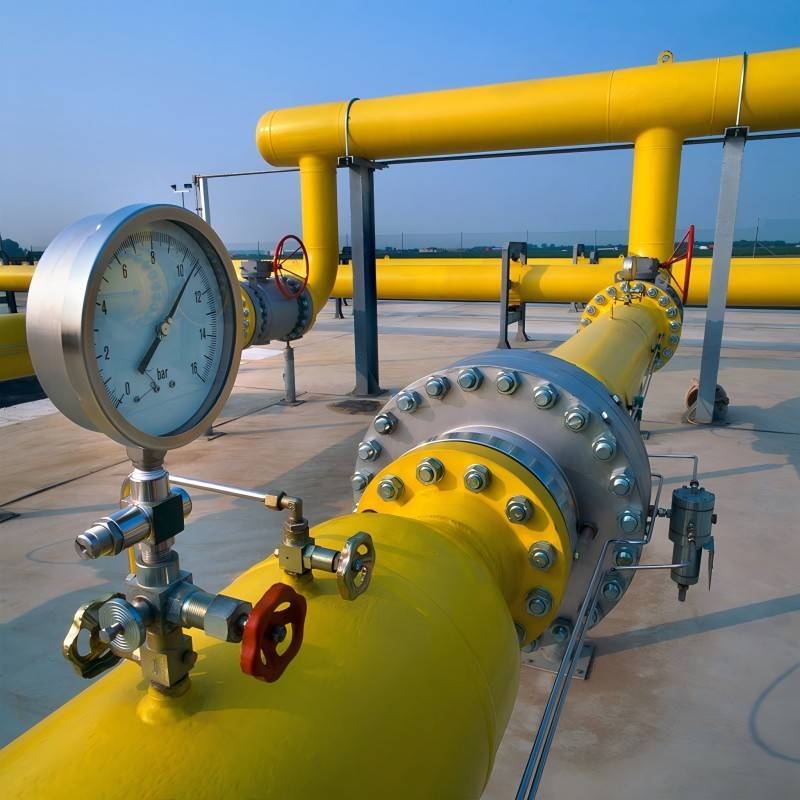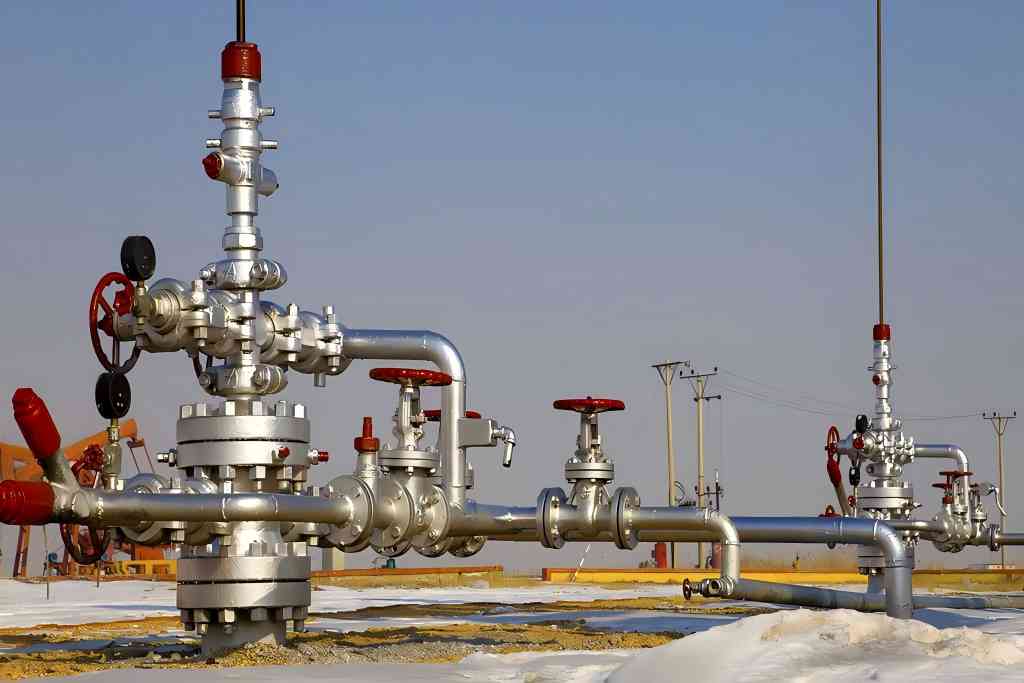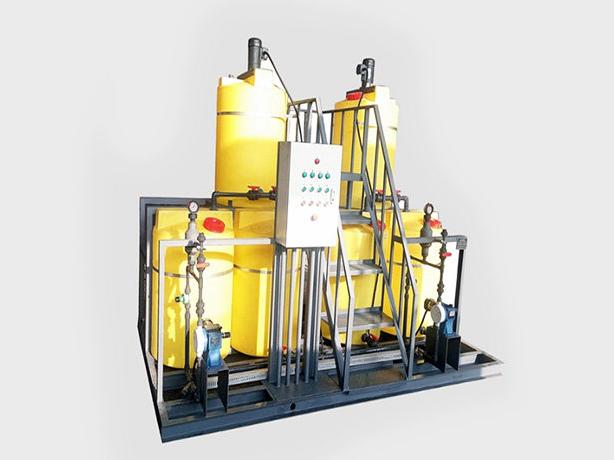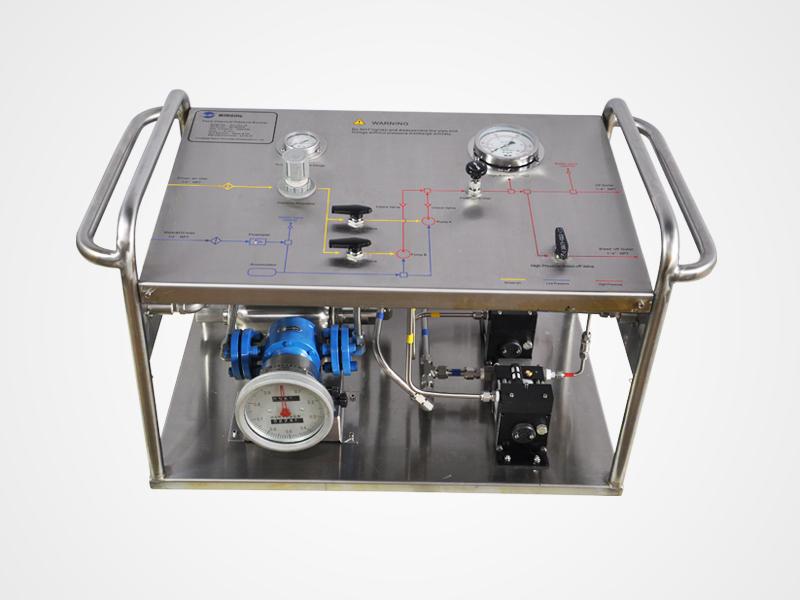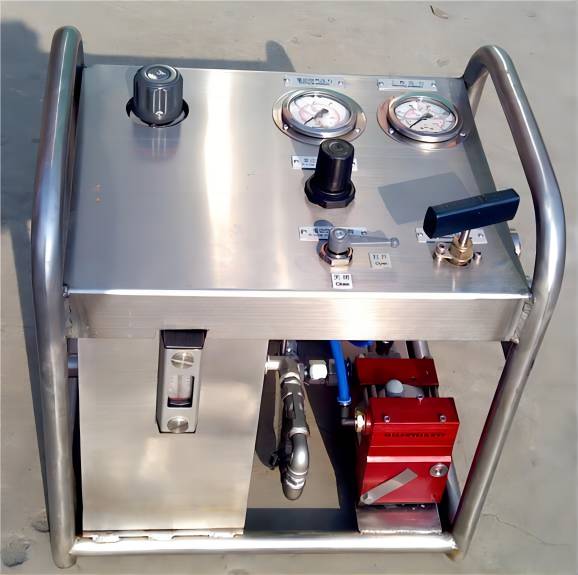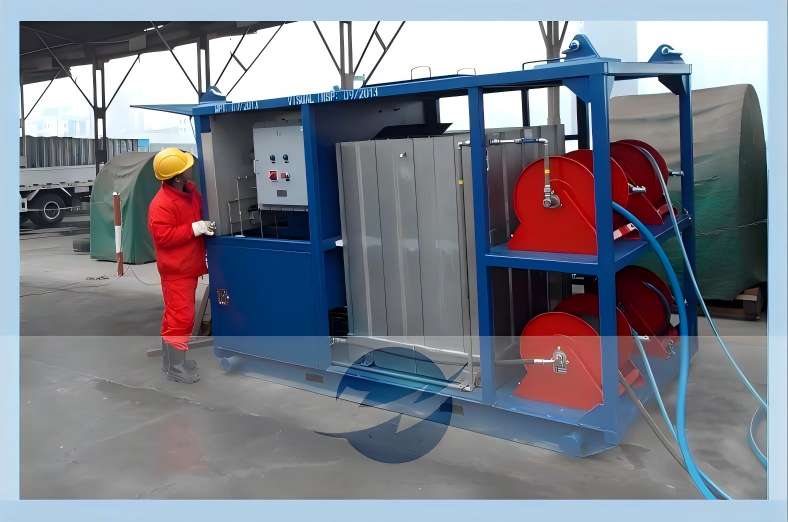Hydrostatic Pressure Testing Pump Classification and Its Pros and Cons
In industrial and engineering settings, equipment like pressure vessels, pipelines, and valves must withstand high pressure safely. Ensuring that these components are robust and leak-free is essential for operational safety, and that’s where hydrostatic pressure testing comes into play. Hydrostatic pressure testing pumps are specialized tools used to check the integrity and strength of equipment under high-pressure conditions. By delivering a controlled, high-pressure liquid, these pumps allow engineers to test for leaks, structural integrity, and overall reliability.
Hydrostatic pressure testing pumps come in various types, each tailored to different applications and conditions. This article delves into the classification of hydrostatic pressure testing pumps, examining each type’s advantages and disadvantages to help users select the ideal pump for their needs.
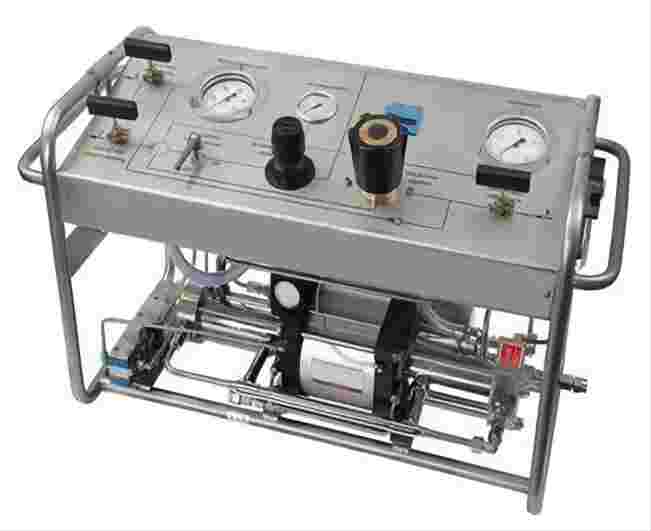
What is a Hydrostatic Pressure Testing Pump?
A hydrostatic pressure testing pump is a device designed to generate high-pressure liquid to test the durability and safety of equipment like pipelines, tanks, boilers, and pressure vessels. In hydrostatic testing, water or another non-compressible fluid is introduced into the system at a specified pressure level. This test is vital for industries such as oil and gas, plumbing, and construction, where high-pressure equipment is frequently in use.
Hydrostatic testing pumps must be capable of delivering a constant and adjustable flow rate to meet the demands of both static and burst tests. These pumps are critical for validating equipment that may face high-pressure environments, reducing the risk of equipment failure and accidents. With the right type of pump, users can conduct these tests efficiently and accurately.
Classification of Hydrostatic Pressure Testing Pumps
Hydrostatic pressure testing pumps can be classified based on their drive mechanism and operating principle. The primary types include:
- Electric hydrostatic test pumps
- Pneumatic hydrostatic test pumps
- Manual hydrostatic test pumps
- Hydraulic hydrostatic test pumps
- Diesel hydrostatic test pumps
- CNC-controlled hydrostatic test pumps
Each pump type has unique advantages and is designed for specific testing conditions and requirements. Let’s take a closer look at each of these types, their applications, and their respective pros and cons.
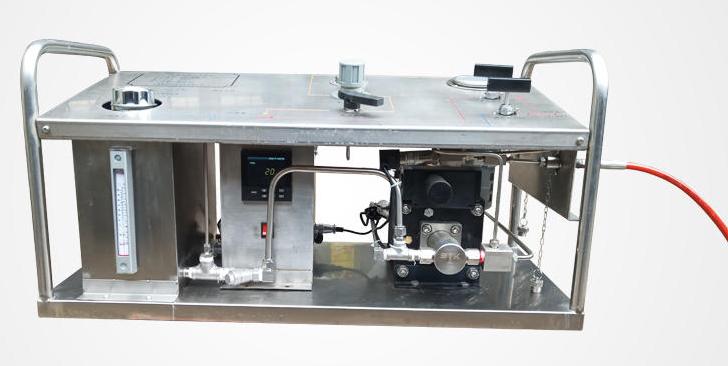
1. Electric Hydrostatic Test Pump
Electric hydrostatic test pumps are motor-driven and provide steady pressure output. These pumps are ideal for stable environments, such as laboratories or permanent testing facilities, where power is readily available. The electric motor ensures consistent pressure delivery, making it reliable for extended testing sessions. They are commonly used in manufacturing facilities for routine testing.
Pros:
- Easy to operate and adjust
- Stable pressure output
- Suitable for continuous, long-term use
Cons:
- Requires an electrical power source, limiting portability
- Not ideal for remote or off-grid testing locations
Use Case: Electric hydrostatic pumps are often used in factory settings for testing large pipelines or valves as they offer consistent pressure and require minimal intervention.
2. Pneumatic Hydrostatic Test Pump
Pneumatic hydrostatic test pumps utilize compressed air as a power source. They are designed with a cylinder-driven piston that generates pressure, making them simple to operate and requiring little maintenance. Pneumatic pumps are often chosen for applications where portability and ease of use are crucial, and compressed air is readily available.
Pros:
- Easy to operate and maintain
- Lightweight and portable
- Works well in explosive environments as there is no electrical hazard
Cons:
- Pressure may vary with air quality or supply fluctuations
- Requires a reliable source of compressed air
Use Case: Pneumatic hydrostatic pumps are frequently used in field testing scenarios, particularly in industries where electrical hazards must be minimized.
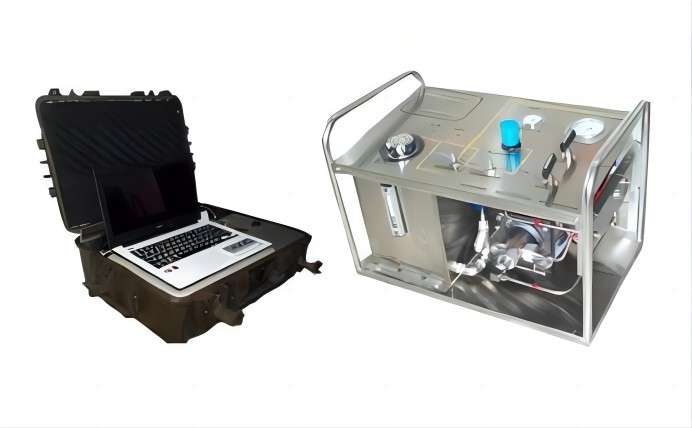
3. Manual Hydrostatic Test Pump
Manual hydrostatic test pumps are hand-operated and require physical effort to increase or decrease pressure. These pumps are compact and highly portable, making them perfect for small-scale testing in remote or mobile locations. They’re also budget-friendly, which makes them popular for occasional or emergency use.
Pros:
- Portable and lightweight
- Does not require any power source
- Cost-effective for occasional testing needs
Cons:
- Limited pressure capacity compared to powered pumps
- Labor-intensive for larger tests or prolonged use
Use Case: Manual pumps are suitable for low-pressure applications and are frequently used for small-scale testing by plumbers or in situations where power sources are unavailable.
4. Hydraulic Hydrostatic Test Pump
Hydraulic hydrostatic test pumps use hydraulic oil to generate high pressure. These pumps are powerful and provide a higher pressure range than manual or pneumatic pumps, making them suitable for heavy-duty applications. The hydraulic drive ensures stable and controllable pressure output, which is ideal for environments requiring precise and sustained pressure levels.
Pros:
- Can generate very high pressure levels
- Consistent and reliable pressure output
- Suitable for heavy-duty testing applications
Cons:
- Requires hydraulic fluid, which may need regular maintenance or replacement
- Larger and heavier, which may limit portability
Use Case: Hydraulic pumps are often used in industries such as mining and oil and gas, where equipment must undergo high-pressure testing to ensure operational safety.
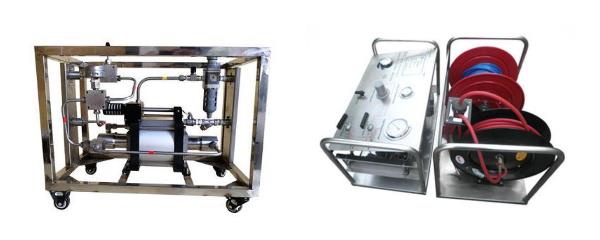
5. Diesel Hydrostatic Test Pump
Diesel hydrostatic test pumps are engine-driven and ideal for off-grid testing environments. These pumps don’t require electricity, making them excellent for field testing or locations where power supply is limited. Diesel pumps are especially useful in construction sites or remote areas.
Pros:
- Independent of electrical power; highly suitable for remote testing
- Capable of handling high pressures
- Rugged and designed for outdoor use
Cons:
- Produces emissions and noise
- Requires fuel, which adds to operational costs and logistical requirements
Use Case: Diesel pumps are ideal for testing equipment in remote oil and gas sites, where they provide reliable pressure without the need for electricity.
6. CNC-Controlled Hydrostatic Test Pump
CNC-controlled hydrostatic test pumps integrate modern computer control to provide precise pressure adjustments and automation. These pumps are capable of highly accurate, programmable tests, making them ideal for environments that require strict testing parameters. CNC pumps are particularly beneficial in manufacturing quality control processes.
Pros:
- High precision with automated control
- Suitable for complex or repetitive testing tasks
- Reduces manual labor and increases testing accuracy
Cons:
- High initial cost and requires technical expertise
- More complex to operate and maintain than other pumps
Use Case: CNC-controlled pumps are used in high-precision industries like aerospace and automotive manufacturing, where components require precise pressure testing to ensure compliance with safety standards.
Here is the summary of the pros and cons of each pump type:
| Pump Type | Pros | Cons |
| Electric | Stable, easy to use | Requires electricity |
| Pneumatic | Simple, low maintenance | Air supply dependent |
| Manual | Portable, economical | Labor-intensive |
| Hydraulic | High pressure, reliable | Heavy, needs hydraulic fluid |
| Diesel | Good for remote sites | Emissions, requires fuel |
| CNC-Controlled | High precision, automated | Expensive, complex |
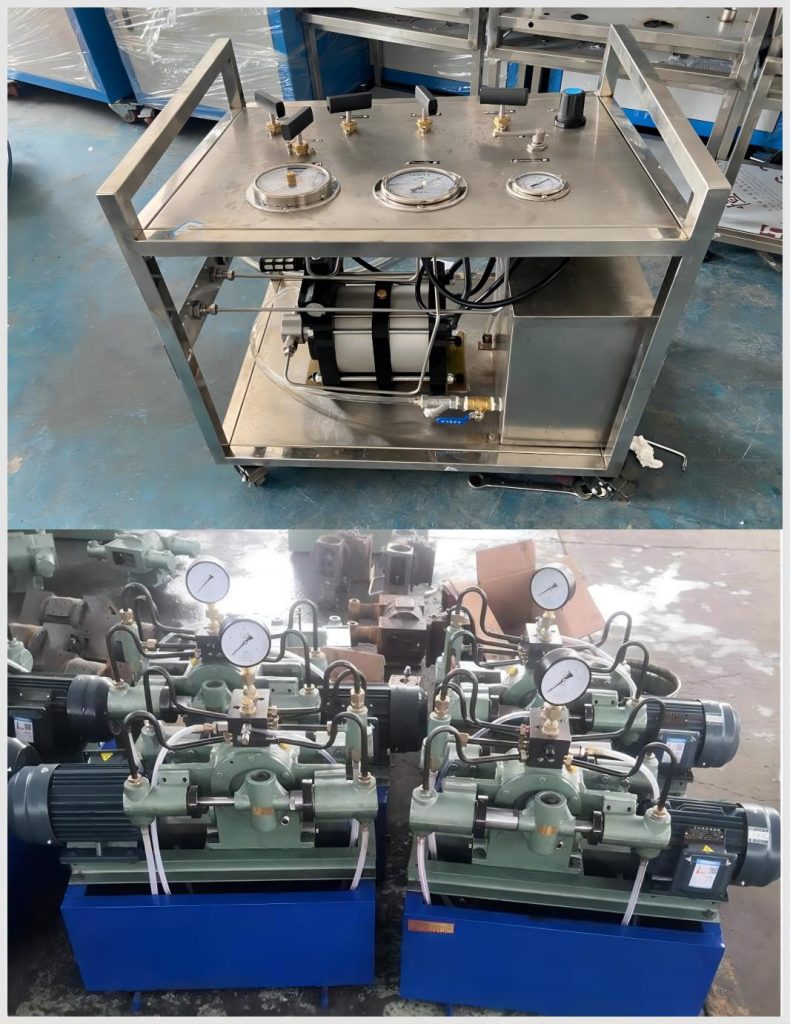
Factors to Consider When Choosing a Hydrostatic Pressure Testing Pump
Selecting the right hydrostatic pressure testing pump depends on several factors, including:
- Application Requirements: Consider the pressure range, testing frequency, and specific conditions like location and environment.
- Power Source Availability: Determine whether the testing site has access to electricity or compressed air, or if a diesel or manual pump might be more suitable.
- Portability Needs: For field testing, lightweight or portable pumps like manual and pneumatic options are preferable.
- Budget Constraints: Diesel and CNC pumps may have higher upfront costs but offer unique advantages for specific testing needs.
- Maintenance and Ease of Use: Evaluate the maintenance requirements and complexity of operating the pump, as well as the availability of replacement parts or services.
Choosing the right hydrostatic pressure testing pump is critical for achieving accurate, efficient, and safe testing results. With options ranging from electric and pneumatic pumps to manual, hydraulic, diesel, and CNC-controlled models, there is a solution for every testing need and environment. Each pump type comes with its own advantages and limitations, making it essential to match the pump’s characteristics to the specific testing requirements, such as power availability, portability, precision, and pressure range.

